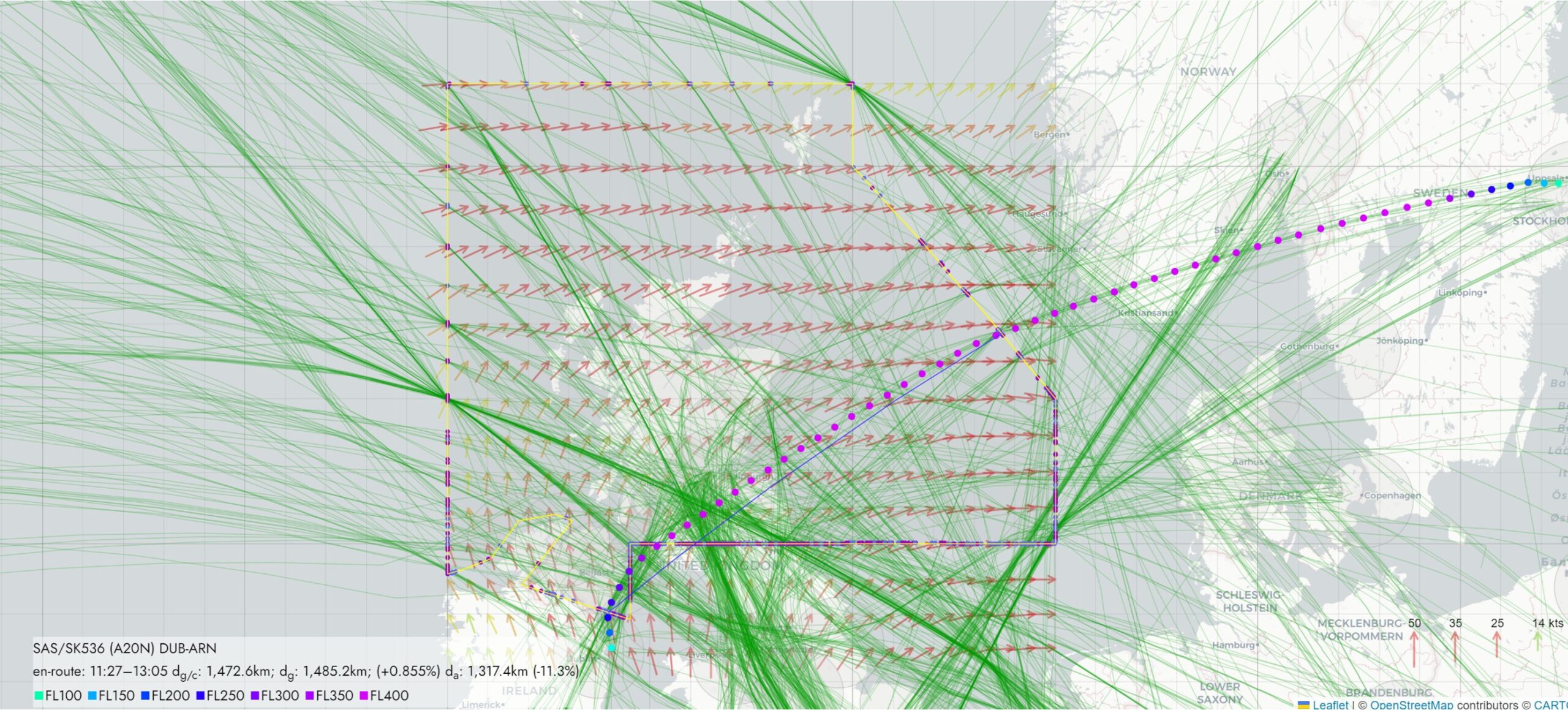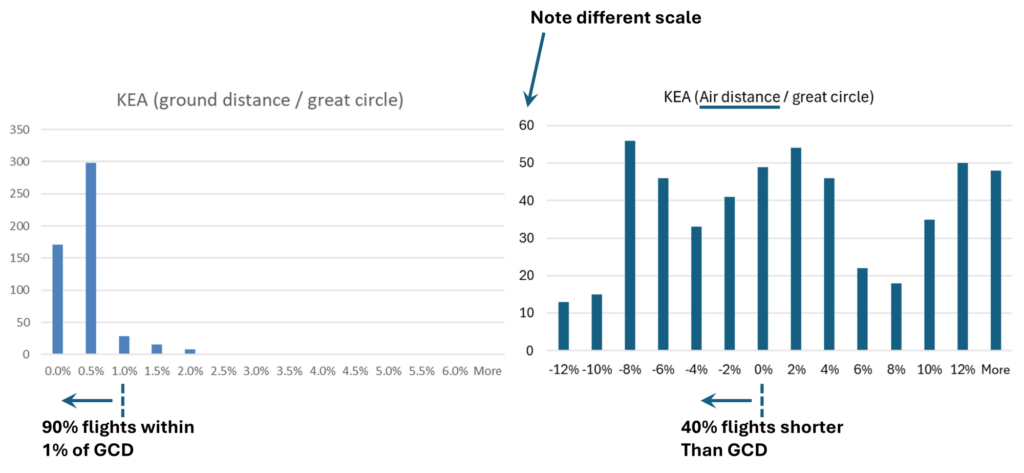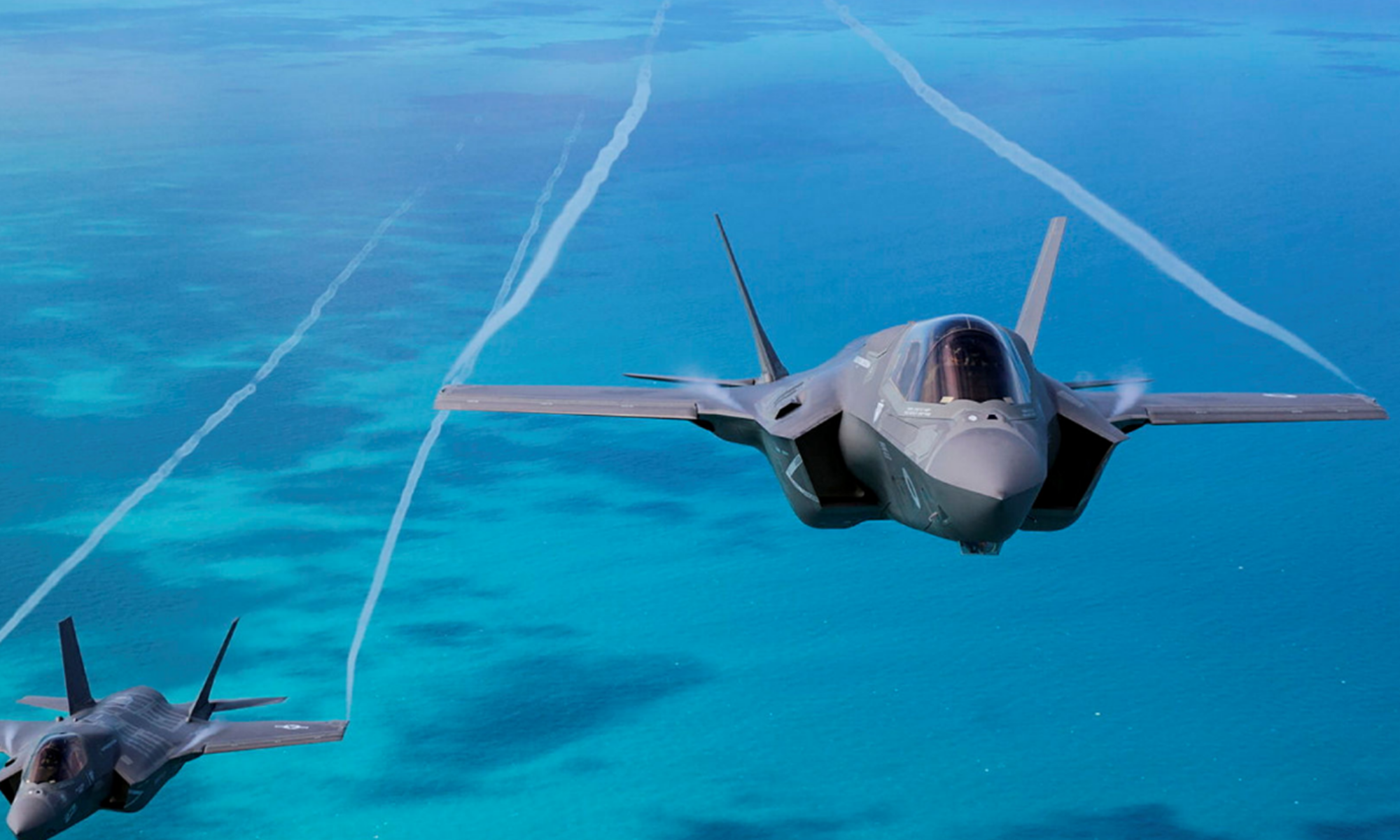This is an update of our January sense-making article on FRA.
What is Free Route Airspace?
Free Route Airspace (FRA) is an airspace within which airlines may freely plan their routes between an entry point and an exit point. It was introduced in Europe to give airlines better flight routing opportunities than could be achieved with the fixed route structure. A fundamental component of Free Route Airspace is the use of ‘user-preferred points’, with connecting segments, which enable airlines to actually ‘free’ route.
The potential benefits of FRA were believed to be considerable, with various benefits estimated at 1.3% 1 up to ~2% 2 of flight distance at the network level. Implementation did not require new technology, just changes to airspace and operations, creating a strong business case for it.
What’s the problem?
The user-preferred points don’t exist. So, we have to ask if the benefits exist? Let’s unpack this. We first need to consider that there are two versions of FRA:
- Direct, which comprises direct (great circle) routes between FRA entry and exit points.
- Free Route, which does not have any published routes and enables flights to be planned along published or user defined waypoints within the FRA.
Figure 1: Example direct routing through Free Route Airspace (Scottish FIR)

Over the last ~10 years, the fixed route structure has been steadily dismantled, waypoints and route segments have been deleted. This means that the only way to get ‘free’ route is for the flight planning service providers to supply user-preferred waypoints.
How do we know this?
Airspace Unlimited analysed routes through Free Route Airspace. We found that up to 90% of the routes were within 1% of the great circle distance. This is impressive track keeping born of the age of PBN. But to quote Airlines for Europe (A4E): “Unfortunately, the misconception of ‘direct route = most fuel-efficient route’ refuses to go away”.
Maybe there was no wind when we analysed the data? We have a metric for this called ‘air-distance’. It is the equivalent distance travelled by a flight between two points with a non-zero wind component. If that does not make sense, think about walking along a travelator. If you walk in the direction of the travelator, you get there quicker, as if you had gone a shorter distance, and vice versa. Air distance looks very different to ground distance. In the following figure, 90% of flights are within 1% of the great circle by distance, but in terms of air distance, 40% are actually shorter than the great circle (i.e. tail wind).

What ‘free’ route is supposed to do is to help the flight planners improve the flight trajectory by taking account for winds (avoid head wind, take a tail wind). What we know from our air distance analysis is that this isn’t being done.
What does the industry say?
To explain our findings, we have also been consulting with airlines, ANSPs and flight planning service providers. This led us to identify three main factors:
- The difficulty for computer flight planning systems to model and determine user-defined waypoints and segments for a given day of wind conditions, alongside the myriad other roles of these advanced automation systems.
- The ever growing complexity from constraining traffic flows through the RAD.
- The measurement of flight efficiency according to the ground track, not the flight time.
In summary, the current situation is that the ATM system is inadvertently constraining traffic flows to be less efficient while we have a measurement method that makes inefficient routes look efficient.
What can we do to bring free route airspace back on track?
Our conclusion is that we need to revisit how we design FRA and consider how we help the flight planning process produce better outcomes for airlines. We are currently working on a solution to do this, which will both simplify the problem for flight planning companies and lead to fewer RAD restrictions. This will be a win for airlines, ANSPs and the environment.
For further information contact Airspace Unlimited (Martin Hawley or Doug Meyerhoff).
- Gaxiola C. FRA CBA study. PhD Thesis. 2019 ↩︎
- https://www.eurocontrol.int/concept/free-route-airspace ↩︎
